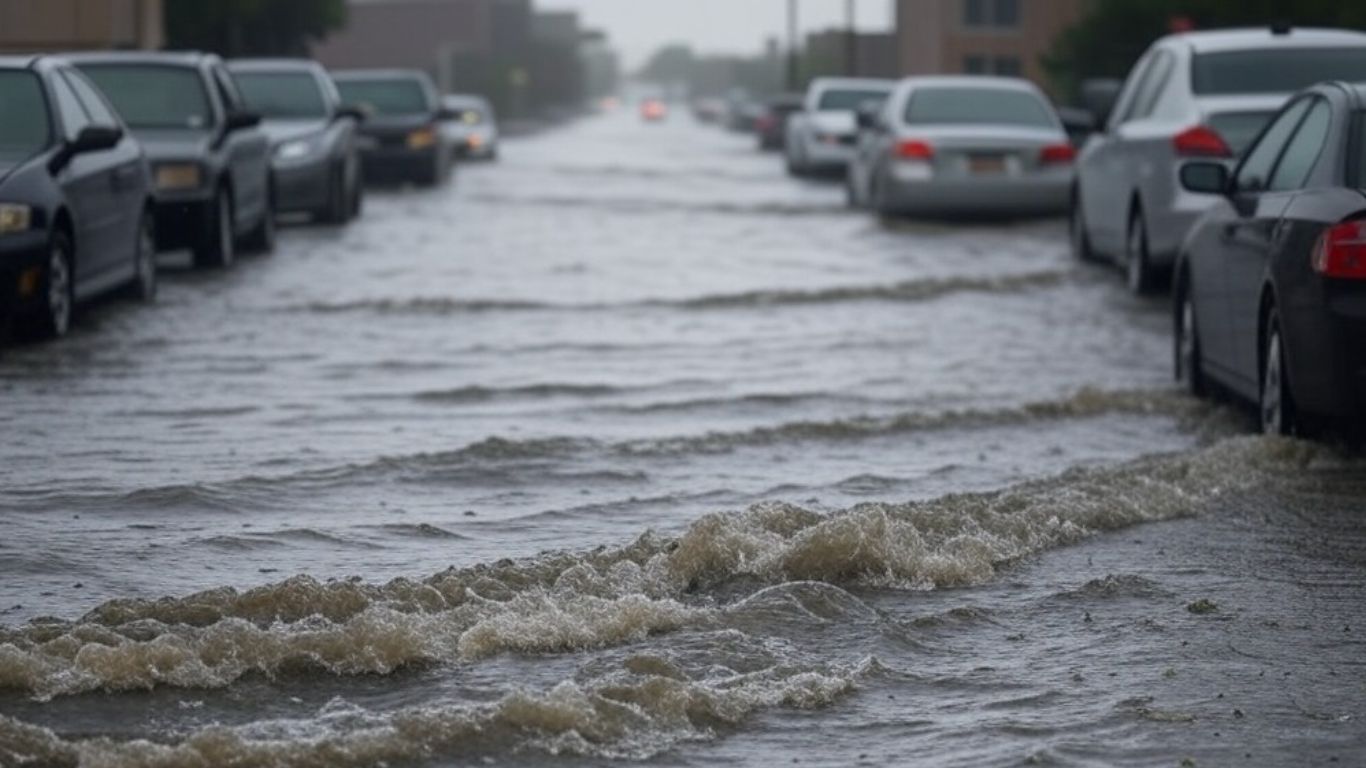The National Weather Service (NWS) in Fort Worth, TX, issued a flash flood warning at 10:52 a.m. Tuesday for Collin, Dallas, and Denton counties. Heavy thunderstorms have already resulted in up to 2 inches of rain, with rainfall rates of 1 to 2 inches per hour. Additional rainfall of 1 to 2 inches is expected, and flash flooding is either ongoing or imminent in the affected areas.
Areas Affected
The warning impacts several key locations, including:
- North Dallas
- Plano
- Garland
- Irving
- McKinney
- Carrollton
- Frisco
- Lewisville
- Allen
- Flower Mound
- Grapevine
- Coppell
- Farmers Branch
- Addison
Additional towns such as Murphy, Fairview, Lucas, and Parker are also included.
Safety Advice from NWS
The NWS stresses the importance of safety during flooding, with the well-known reminder: “Turn around, don’t drown.” Most flood-related fatalities occur in vehicles.
Staying Safe During a Flood
If you’re in a flood-prone area, follow these steps:
- Move to Higher Ground: Quickly relocate to higher areas if flooding is imminent.
- Evacuate When Instructed: Leave immediately if told to do so. Lock your home and, if time permits, disconnect utilities.
- Avoid Floodwaters: Do not walk or drive through floodwaters. Even 6 inches of swiftly moving water can knock you over, and 12 inches can carry away most vehicles.
- Stay Alert for Electrical Hazards: Avoid basements or areas with submerged outlets or cords. If you hear buzzing or crackling noises, leave the area immediately.
- Contact Emergency Services: If trapped, seek the highest point possible and call 911.
Driving Safely in Heavy Rain
Flood conditions often make driving hazardous. The NWS offers these critical tips:
- Turn on Headlights: Improves visibility and alerts other drivers.
- Stay on High Ground: Avoid edges of roads where rainwater tends to accumulate.
- Avoid Puddles: Driving through water can cause hydroplaning or loss of control.
- Keep Distance from Large Vehicles: Trucks and buses can spray water, reducing visibility.
- Avoid Flooded Roads: Never attempt to drive through a flooded area; turn around instead.
Understanding Hydroplaning
Hydroplaning occurs when water builds up in front of your tires faster than they can displace it, creating a layer of water between the tires and the road.
Contributors to Hydroplaning
- Speed: Higher speeds reduce traction and increase the likelihood of sliding.
- Water Depth: Even a thin layer can lead to hydroplaning.
- Tire Tread Depth: Ensure tires are in good condition before driving.
What to Do If Your Vehicle Hydroplanes
- Ease Off the Accelerator: Slow down until your tires regain traction.
- Turn Into the Skid: Align your tires with the direction of the slide.
- Wait for Road Reconnection: Once traction is regained, gently straighten the wheels.
- Brake Gently: Use anti-lock brakes normally or pump older brakes lightly.
Looking Ahead
The flash flood warning is in effect until 2 p.m.. Residents in affected areas should remain vigilant, avoid unnecessary travel, and monitor updates from the NWS.
By following safety precautions and staying informed, you can protect yourself and your loved ones during this weather event.















